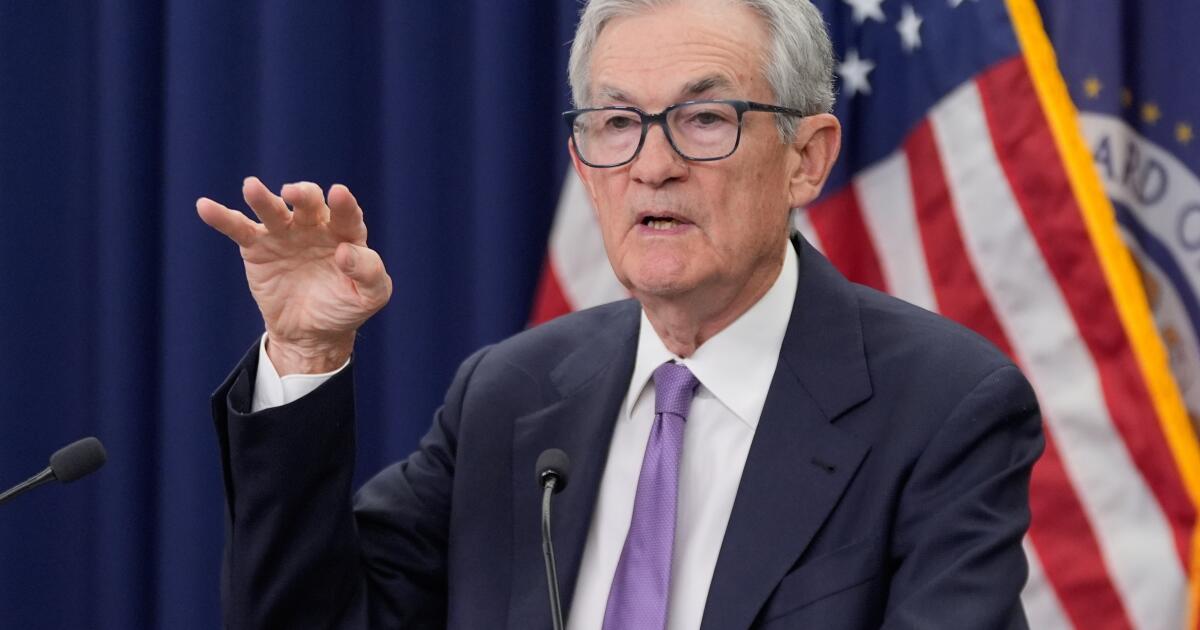Stocks on Wall Street exhibited volatility on October 25, 2023, following a decision by the Federal Reserve to cut interest rates for the second time this year. The aim is to support a slowing job market, although Fed Chair Jerome Powell cautioned that further rate reductions are not guaranteed. The S&P 500 ended virtually unchanged, dipping less than 0.1%, while the Dow Jones Industrial Average fell by 73 points, or 0.2%. In contrast, the Nasdaq Composite rose by 0.5%.
The market had initially responded positively to the Fed’s announcement, which aimed to stimulate job growth. However, Powell’s subsequent remarks dampened optimism. He stated it “is not a foregone conclusion” that the Fed will implement another cut at its next meeting in December, describing the outlook as “far from it.” This shift in sentiment hit Wall Street hard, as many traders had anticipated a December cut as almost certain.
Powell highlighted that within the Fed’s committee, there are “strongly differing views about how to proceed in December.” Notably, one member, Jeffrey Schmid, voted against the rate cut, advocating instead for maintaining the current federal funds rate. This dissent underscored the uncertainty surrounding the Fed’s future policy directions.
Corporate Earnings Drive Market Dynamics
Despite the mixed signals from the Fed, corporate earnings reports are playing a crucial role in shaping market activity. Companies are under pressure to show profit growth to justify their elevated stock prices. Teradyne surged 20.5%, marking the largest gain in the S&P 500, after reporting stronger-than-expected profits for the recent quarter. CEO Greg Smith attributed this success to robust demand for artificial intelligence applications, stating that “AI-related test demand remains robust.”
Similarly, Nvidia experienced a 3% increase, becoming the first company valued at $5 trillion on Wall Street, just three months after surpassing the $4 trillion mark. The excitement surrounding AI technology has significantly contributed to Nvidia’s valuation.
In a related trend, Caterpillar, known for its heavy machinery, saw its stock rise 11.6% after posting stronger-than-anticipated profit and revenue. The company’s growth was largely driven by its business supplying equipment to data centers that support AI operations.
Conversely, Fiserv faced a dramatic decline, plummeting 44%—its worst performance since the stock began trading in 1986. The financial technology firm reported weaker-than-expected profits and revised its profit outlook downward. Additionally, it made significant changes to its board and leadership team.
Despite reporting better results, Mondelez International saw its stock fall 3.9%. The company, which owns brands like Oreo and Toblerone, is grappling with surging cocoa prices and anticipates challenging market conditions ahead, although it hopes price increases may be stabilizing.
Overall, the S&P 500 closed down by 0.3% at 6,890.59 points, while the Dow Jones Industrial Average finished at 47,632.00, down 74.37 points. Meanwhile, the Nasdaq Composite rose by 130.98 points to settle at 23,958.47.
Global Market Insights
International markets displayed mixed trends, with European indexes responding variably to Wall Street’s movements. In Asia, the Nikkei 225 in Tokyo surged 2.2% to achieve a new record, while Seoul’s Kospi rose by 1.8%, also reaching an all-time high. This uptick followed a meeting between President Donald Trump and South Korea’s leader, enhancing investor sentiment in the region.
In Shanghai, stocks increased by 0.7% ahead of a scheduled meeting between Trump and Chinese leader Xi Jinping. The ongoing trade tensions between the United States and China, marked by high tariffs and tightened technology controls from Washington, continue to loom large over market expectations.
In the bond market, the yield on the 10-year Treasury rose to 4.07% from 3.99% late Tuesday, reflecting a shift in trader expectations regarding future rate cuts. The Fed has signaled that it may need to pause rate reductions if inflation trends upward, complicating the decision-making landscape for its officials.
Adding to the complexity is the ongoing U.S. government shutdown, which has delayed critical economic data updates that typically inform the Fed’s policy decisions.
As Wall Street navigates a mix of corporate performances and central bank signals, investors remain focused on upcoming earnings reports and economic indicators that will shape the market’s trajectory in the months ahead.






